Quackgrass – Identification, Control, and Uses
This post may contain affiliate links. Read my full disclosure here.
Quackgrass, Elymus repens, also known as couch grass, is a common weed in lawns and gardens. Treated as a scourge by lawn care companies, it’s quite valuable for herbal medicine and livestock food. We share identification tips, how to use it, and how to get rid of quackgrass where it’s not wanted.
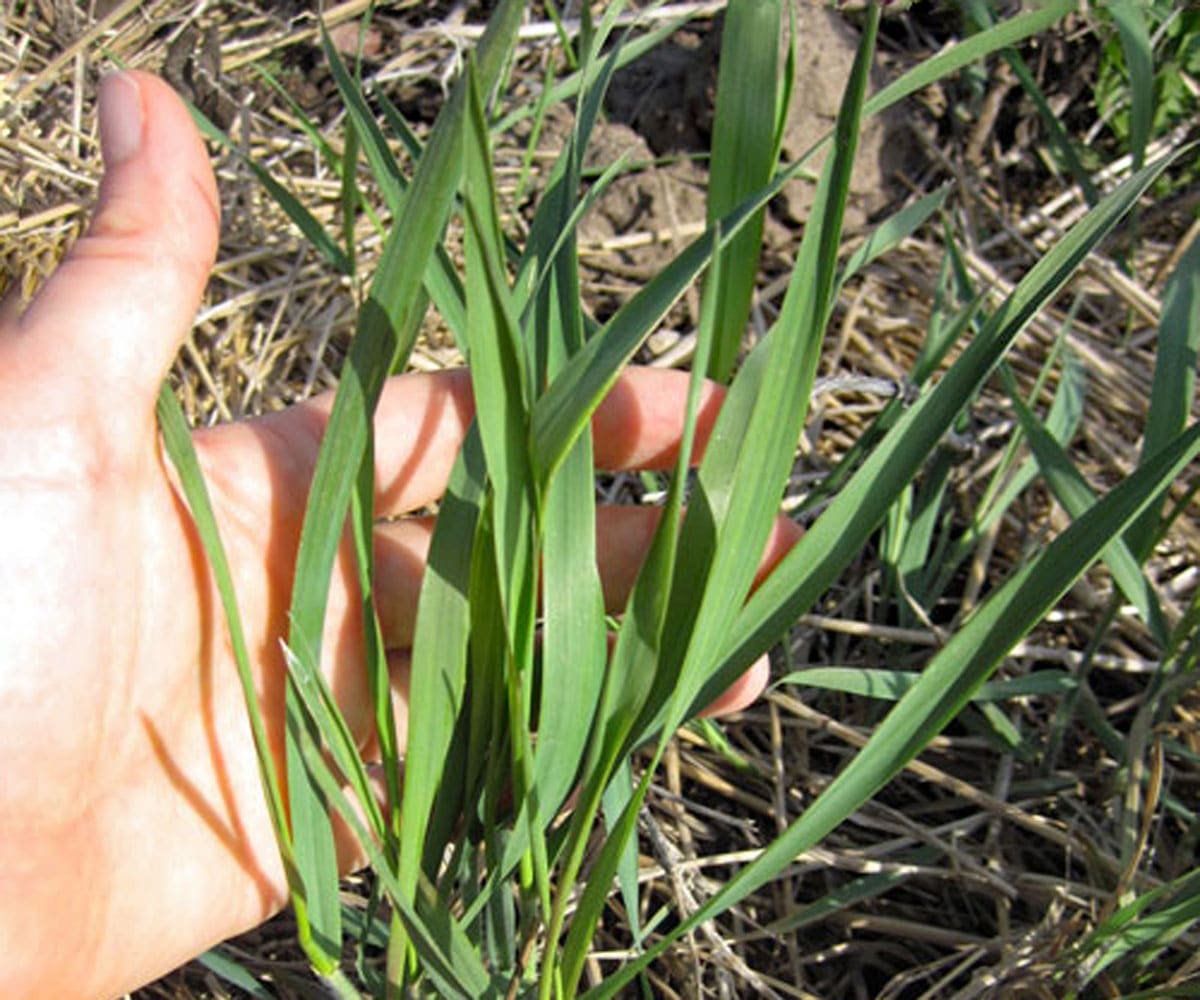
Quackgrass Identification
Quackgrass is widespread around the globe, but native to Europe, Asia and northwest Africa. It’s so prolific that it’s classified as a noxious weed throughout much of the U.S., growing in lawns, gardens, roadsides, and fields.
The plant is a cool season perennial grass (monocot), blooming in the spring/summer and dying back in fall/winter. Plants reach 1-4 feet tall, with long, flat leaves 1/4 to 1/2 inch wide. The leaf blades wrap around the stem with two clasping auricles.
The seed head resembles the seed head on oats or wheat, but much finer. It produces 15-400 seeds per plant stem (commonly 25-40), which can persist in the soil for years.
The rhizome root system is the easiest way to identify this plant, and to distinguish it from annual ryegrass. (Annual ryegrass looks similar but does not have rhizomes.)
Patches of quackgrass spread rapidly via rhizomes (underground runners). Elymus repens is also allelopathic, which means that it releases chemicals that inhibit the growth of other plants.
Here is an example of a single quackgrass plant, with a rhizomes extending roughly 4 feet in length. Notice the new grass stems shooting up along with rhizome.
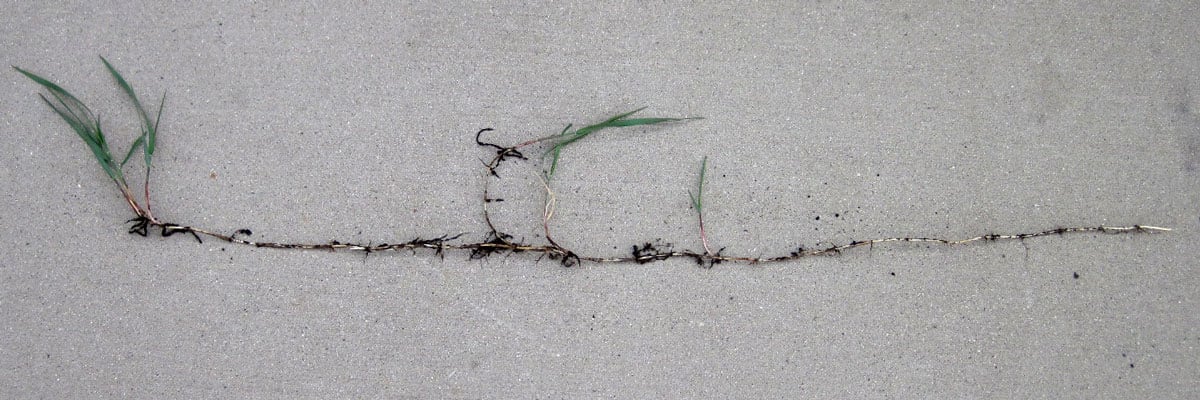
Each segment of the root can produce a new plant if left in the soil. This makes the plant a gardener’s bane, but also makes it an extremely durable forage crop. The rhizomes also anchor the soil well to help prevent erosion. It’s a great range plant, but aggressive competition for cultivated crops in the garden and farm field.
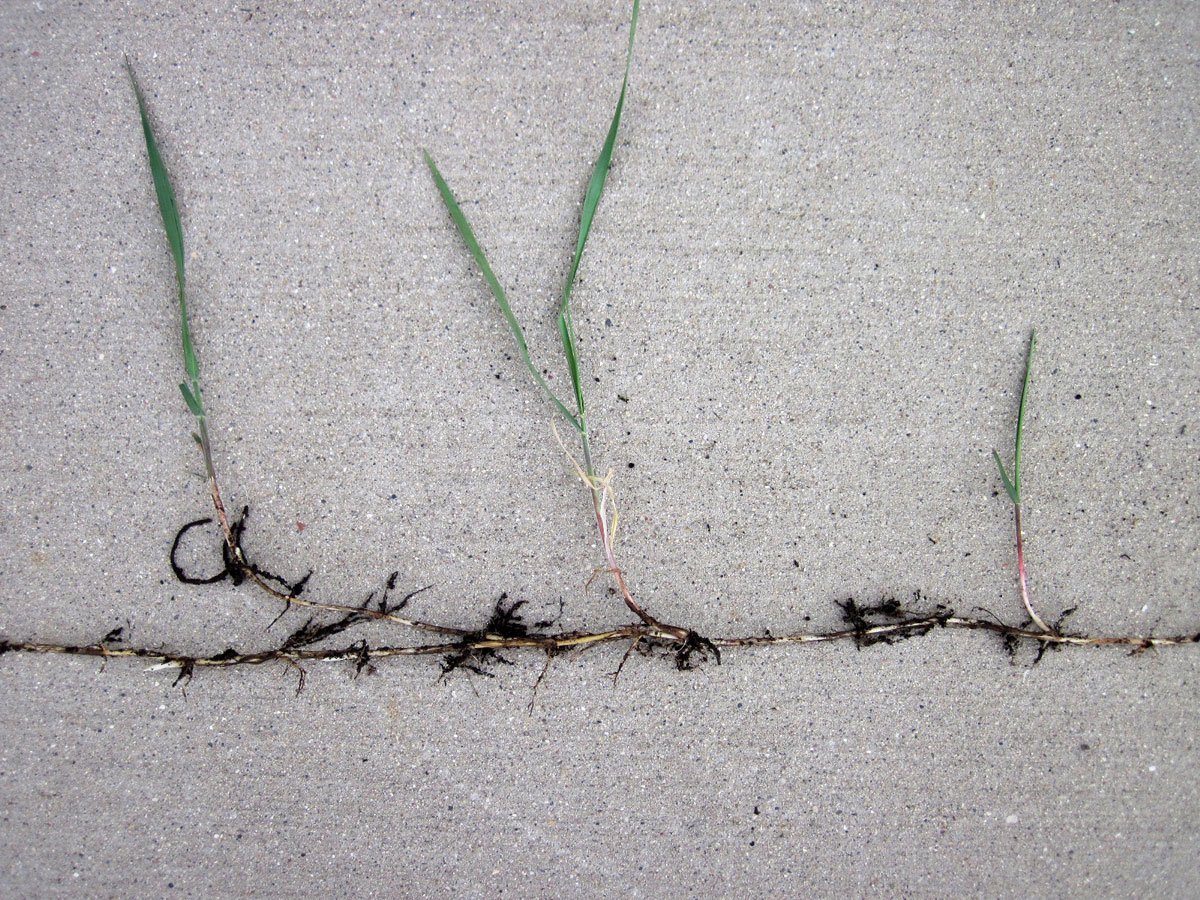
How to Get Rid of Quackgrass
The standard strategy is to use non-selective herbicides (like glyphosate) to kill quackgrass when it’s actively growing. The problem is that these herbicides kill everything else, too, including your soil microbes.
We had terrible quackgrass issues when we first started gardening. Over time, we improved the soil, and now we have hardly any quackgrass.
Quackgrass soils have low calcium, low humus, and anaerobic bacteria dominating the soil biosphere. There is often hardpan, high phosphate, high potassium, and very high magnesium. Soggy soils help quackgrass thrive.
To Get Rid of Quackgrass, start by applying calcium. Good calcium sources for reducing quackgrass pressure include:
- Calcitic lime (ground limestone, calcium carbonate)
- Crushed eggshells
- Oyster shell flour
We need to improve aeration and organic matter to jump start actinomycetes molds and other healthy soil microbes. Work to improve drainage with raised beds, regrading, or adding organic matter. Top dress with compost and use soil building cover crops, especially deep rooting crops like tillage radishes, to break up compacted soil. Humate soil conditions are another tool you can use to reduce compaction and improve aeration.
Ramial wood mulch in paths and finer organic mulch in beds will help smother the grass and build organic matter. Ramial wood mulch is chopped tree tops/branches, and breaks down faster and is more biologically active than bark mulch. It’s a great breeding ground for healthy soil molds.
See “Get Rid of Your Toughest Weeds Permanently” for more information.
Forage Value
Studies indicate that quackgrass is a viable forage crop for ruminants. It’s durable and drought tolerant.
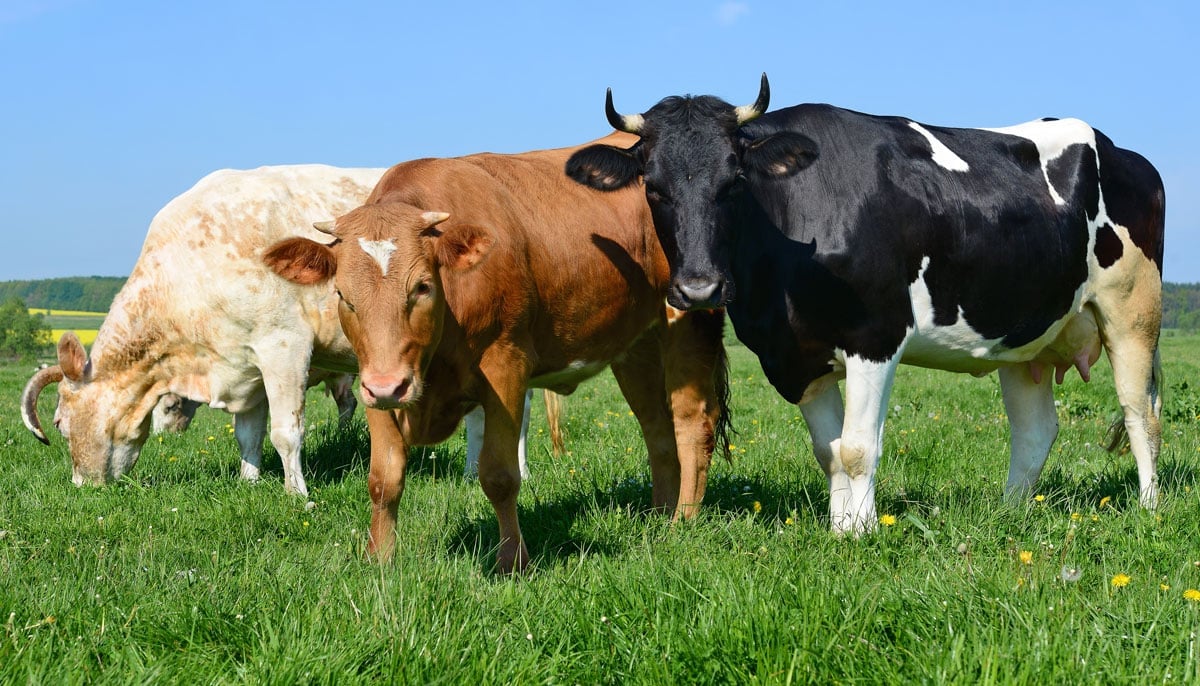
Would you like to save this?
In timothy hay mixed with quackgrass, beef cattle yield was similar, even in stands with 100% quackgrass. The feed conversion ratio was better for timothy, but animal yield from quackgrass was better than timothy.
Couch grass rhizomes added to horse feed may improve the horses coats. Dogs use the grass as a natural emetic.
Use of Quackgrass for Food
The leaves, roots and seeds of quackgrass are edible, but not the tastiest wild harvested crop. Try very young leaves as salad greens or for juicing.
Once the plant gets a little larger, the leaves become tough and fibrous. You can get a more palatable nibble by pulling out an individual stem and eating only the base. The seeds are technically edible, but there isn’t much there to eat.
The roots (rhizomes) are the stars of the plant, both for eating and for medicinal use. They are mildly sweet to the taste, with a variety of uses. Try them dried and ground into a flour to use in baking, similar to zucchini flour.
Dried and roasted, they make an herbal coffee substitute, like dandelion and chicory. The natural sweetness means the roots will ferment. They’re labor intensive to clean, but quackgrass root wine resembles plum wine in flavor.
Medicinal Use
Backyard Medicine quotes Culpeper from 1653, “Although a gardener be of another opinion, yet a physician holds half an acre of couch grass to be worth five acres of carrots twice told over.”
Harvest the roots in spring or fall to use for medicine. They’ll have the most nutrients stored when the plant tops are less actively growing. Clean the roots well, cut into short lengths, and dry.

To make tea, steep two heaping teaspoons of dried root in a mug of boiling water for ten minutes. Take three times per day. You may also use the roots to make a tincture.
The action of the herb is anti-inflammatory, anti-microbial, and diuretic. It is recommended as a urinary tract tonic, to treat conditions such as:
- fever
- constipation
- fluid retention
- cystitis
- urethritis
- enlarged prostate
- kidney stones
- irritable bladder
- and more
This article is for general information only. Always exercise caution when using any wild plants and make sure you have positively identified the plant. Talk to your healthcare provider if you are on any prescription medication.
Other Names
Other names for quackgrass include: couchgrass, dog grass, quickgrass, quitch, quitch grass, scutch, twitch, wheat grass, cough grass, quake grass, chandler’s grass, durfa grass, durfee grass, Dutch grass, Fin’s grass, devil’s grass and witchgrass. Also referred to as Agropyron repens and Elytrigia repens.
More Information about Wild Plants
Thanks so much for stopping by to visit. This post is #22 in the Weekly Weeder series, where share how to use common wild plants. You can view the entire series on the Herbs and Wildcrafting page.
Articles include:
- My Favorite Wildcrafting Resources
- Queen Anne’s Lace – Butterfly Host Plant and Blueberry Protector
- Grandma Called it Medicine Leaf

This article is written by Laurie Neverman. Laurie was raised on a small dairy farm in northwest Wisconsin, where she gathered wildflowers from the woods and pastures. She and her family now live in northeast Wisconsin, where they combine intentional plantings and semi-wild areas. Every season is a new opportunity to learn more about working with wild plants.
Originally posted in 2013, last updated in 2024.

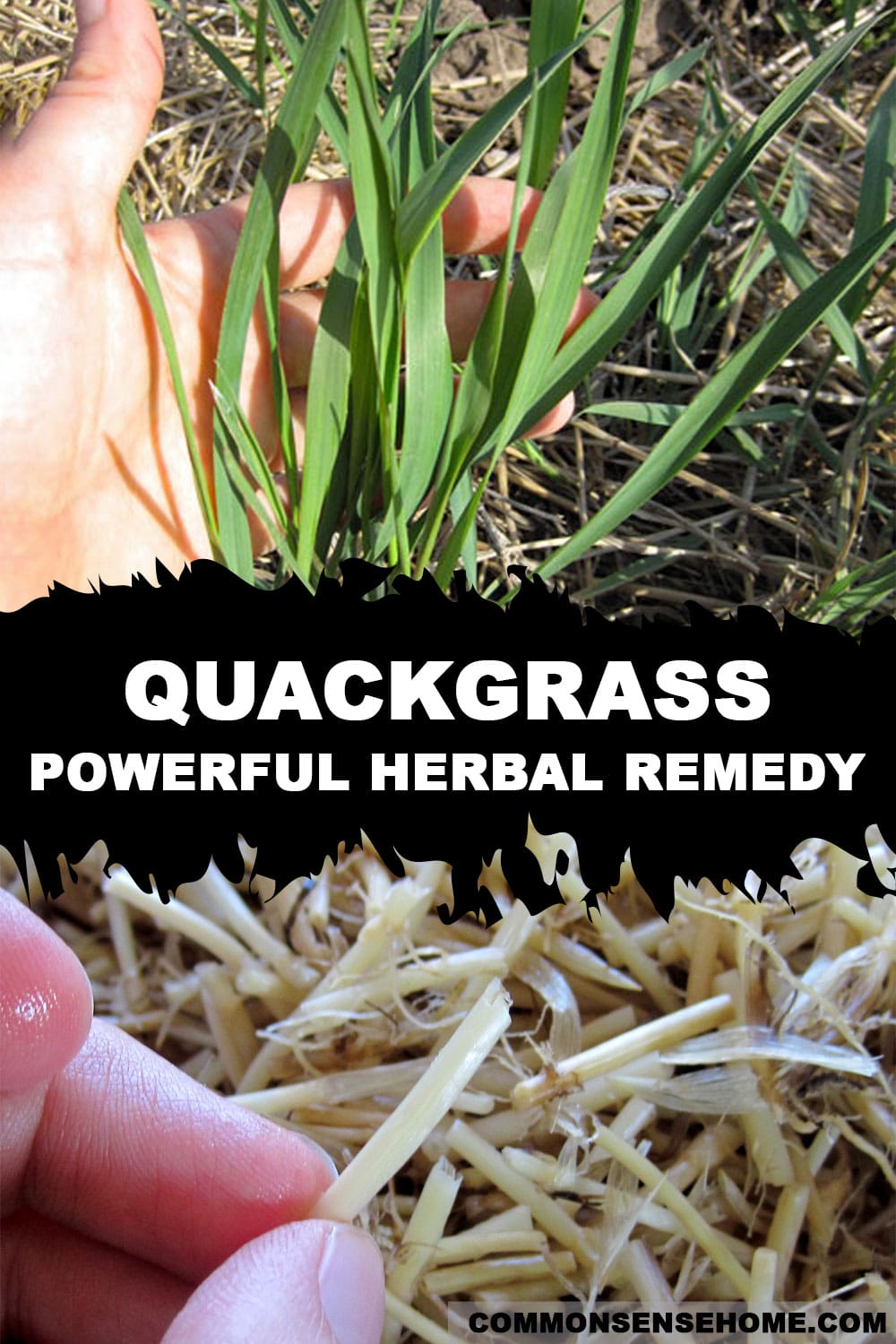
I’m laughing with the irony of having pulled square miles of this precious herb out of my garden! I was hoping it would serve up a bit like ramen noodles or asparagus, but once again Weekly Weeder has revealed the hidden talents of another prolific weed.
If I can convince my husband that I have not gone nuts, and if it will survive Zone 3 conditions in our geodesic greenhouse I am going to experiment with growing it in trays as a Winter treat for our hens. We know already will withstand the vigorous grazing and scratching they will give it.
It may go dormant, depending on the temperature, but it should survive. I’d be interested in hearing how that works out.
Though I haven’t seen anyone talking about cooking the roots like noodles, they’re edible, so you could try it and see if you like the results. Given their sweetness and chewiness, they might work better chopped into bite sized pieces, and used in a sweet/sour flavor profile dish. I bet they’d work well in a sauerkraut blend, too.
There have been many deep Winter days when I was out shoveling the gate into our garden that I could glimpse the deep and living green of that grass under 5 or 6 inches or more of snow. Until now, the sight inspired horror that it could be so tough, but I will now regard it as a fall back crop in the event of a Winter famine. That last deep frost without any snow cover was pretty hard on the green layer, but there are many areas that were mulched enough to insure my weeding days are not over. On hearing that the roots are edible and a bit sweet, my husband has agreed to try it one of his favorite dishes, stir fried veggies and rice. Adding it to sauerkraut is a great suggestion. If I survive the experience, I will report back to you, and share the idea with my Korean sister-in-law, a lifetime and excellent kim chee maker. She may laugh hysterically, or she may, if couch grass grows in Korea, tell me they know all about resorting to it for pickles, Korea having gone through many a famine.
I find the flavor of the roots relatively pleasant, but they are rather chewy. Like most plants, this varies depending on conditions when they are harvested. During fast growth times with plenty of water, they’ll be more tender.
Hi Laurie ~ To answer the question that you posted at Eat The Weeds last month:
While putting together a power point on Couch Grass for an herb class I’m taking, I kept coming across the same references – but no recipe until I found a note from “waljaco” on a Distillers Message Board. He notes there is a Russian Peasant Beer that used Couch Grass called ‘Krest’yanskoye Pivo’ :
“Basically the recipe consists of using the proportion of 1 Russian
bucket or ‘vyedro’ (12 litres or 3 U.S. gals) of water for 2 Russian
pounds or ‘funt’ (approx 2 lb or 918 g) of couch roots. For 6 US gals
(24 l) you need 4 lbs (approx 2 kg) of finely cut couch roots. Soak
them overnight and then boil until they sink to the bottom. This mash
is then sparged by pouring into a tub with a tap, and with its bottom
lined with straw which is weighed down with stones.
Hops and yeast are added. It is bottled with residual sugar for the
secondary fermentation process in the bottles.”
See: http://groups.yahoo.com/group/Distillers/message/4880
I’m also wondering if it could be used in a non-alcoholic “root beer” recipe??
Hope this helps – Barefoot Yankee Gal
Thanks!
Laurie ~ May I have permission to use your pictures of the roots for my power point? I will give you full credit.
Thanks ~ Linda
Sure. Not a problem. Thank you for asking permission.
Thanks 🙂
Hi Laure – I just posted to you over at Eat The Weeds.
Thank you so much!!! I have just recently developed interstitial cystitis and have been looking for alternatives to drugs to treat it. I have a ton of this in my yard!
thx.. digging garden now and came across a few of Quackgrass.. Nice information thx!
Thank you. It turns out I have lots of this stuff. I’ve now been over a month without Coca-cola (yea!) and I’m always looking for new ways to flavor water. (I’m getting kind of tired of mint) And if this actually has a use, even better! As soon as my finals are over I’ll start looking at the other weeds you’ve written up and see how many I can find. The best revenge on weeds is to eat them!